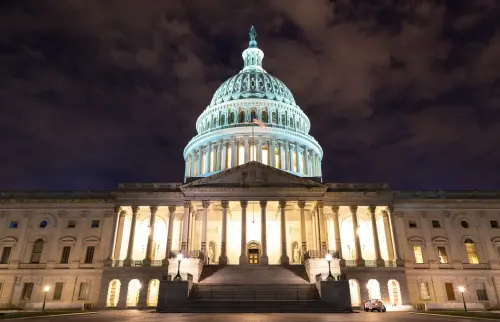Unexpected before the fall presidential election, comprehensive immigration reform is moving ahead at a fast clip. A pleasant surprise has been the chumminess between normally warring factions, a necessity to accomplish the difficult and complicated task of federal reform. Last month the bipartisan Gang of Eight in the Senate put out principles of reform. Then yesterday the AFL-CIO and the U.S. Chamber of Commerce released a joint statement of shared principles regarding worker visas to guide forthcoming legislation.
Citing the aspects of immigration policy that have contributed to a malfunctioning system—its rigidity, unwieldiness, and inefficiencies—they hope their principles will guide a more fair, flexible, and forward-looking worker program.
First, fairness is a term tossed around a lot in the immigration policy debate. If you follow the arguments, there are many different groups of people that immigration policy must be fair to: immigrants who have been waiting in line to enter the country, immigrants already living here without legal status; international students we have trained, and foreign workers we have employed who we then ask to leave the country. On top of that, we also need a policy that is fair to U.S.-born workers. The AFL-CIO and Chamber of Commerce principles embody this fairness in its first principle, which is “American workers should have a first crack at available jobs.”
Second, it is sensible to consider immigration policy that is good for the U.S. economy and communities. In the more than 20 years since the last immigration policy overhaul, the world of work has changed, national economies have developed abroad, and the global economy has created a new order with demand for a globalized labor force. In order to make the system and our economy work better, immigration policy will have to abandon some of the structures of today’s policy, rooted in an earlier time when the national interest in immigration was less attuned to economics. The second principle acknowledges that creating a mechanism that is responsive to the market yet protects workers is a big challenge. But our admissions scheme should have a worker program that is flexible and swift to respond to changes in the labor market.
Third, the AFL-CIO and Chamber of Commerce principles look ahead and realize that being both fair and flexible requires openness to change and a vision that goes beyond the here and now. That understanding calls for better knowledge of how our system works—and how it doesn’t work. Their third principle puts data and analysis front and center as a way to stay up-to-date on behavior and trends in the labor market, adding transparency and insight to our visa system. They advocate for a federal agency with political independence akin to the Bureau of Labor Statistics to monitor and inform both the public and Congress.
Balancing fairness and flexibility will require tough compromises. Knowing, however, that the AFL-CIO and U.S. Chamber of Commerce can come together—just as the Senate’s Gang of Eight did with their bipartisan framework for comprehensive immigration reform—shows great promise.
The Brookings Institution is committed to quality, independence, and impact.
We are supported by a diverse array of funders. In line with our values and policies, each Brookings publication represents the sole views of its author(s).



Commentary
Toward a Fair, Flexible and Forward-Looking Immigration Policy
February 22, 2013